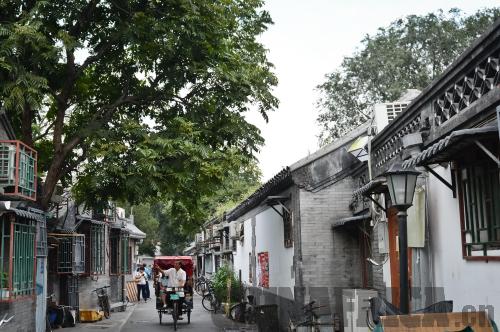| 
When the word "Beijing" is mentioned in conversation, the majority of people around the world instantly think of the obvious: the Great Wall, Summer Palace, Forbidden City and so on. Yet Beijing has so much more to offer to the backpacking tourist or lifelong resident. Once the touristy sights are done and dusted, the Beijing roast duck has been devoured and you've partied in a ridiculously over-priced club with dodgy alcohol, what comes next in the city of Beijing? I'll tell you what - hutongs.
I'll admit it, during my first couple of visits to China's capital I played the tourist role; going only where the guidebook told me and closely following the hordes of fellow travelers trying to get that idyllic China photo. Albeit that experience was fun and extremely memorable, I still didn't feel like I was witnessing "real" China. What is real China? I hear you ask. Well, most people will have their own arguments for what exactly constitutes "real" China, but for me, it's the hutongs.
Hutongs (originally narrow alleys lined by old residences) represent a vital cultural element of Beijing. In relation to Beijing's long history and status as an ancient capital city, nearly every hutong has its own anecdotes, with a handful even associated with historic events. Contrasting with the political life and elite culture represented by places such as the Forbidden City, Summer Palace, and the Temple of Heaven, the hutongs portray the culture of authentic Beijing and its people. They are residential neighborhoods which to this day help create the heart and soul of old Beijing.
To follow the book is to scratch the surface of Beijing; to get underneath the surface is to spend hours strolling along the hidden hutongs. Whether it's during the fresh delights of spring, the searing heat of summer, the windy chill of autumn or the frosty darkness of winter, hutongs are an all-year-round attraction. Not only are they steeped in history and culture, they also offer a respite from the overcrowded and noisy areas of the city. With hundreds to choose from, and each one offering its own unique delights, there's always ample opportunity to stumble across a quaint and idyllic street to stroll down and grab a tea or coffee.
Not only are the hutongs a wonderful place to visit and relax in, they are also home to hundreds and thousands of residents, including foreigners, and the demand for living in them is rapidly growing. To some, there is something very appealing about living in the narrow backstreets of Beijing with captivating courtyards and Western-free surroundings. People who live there say they feel like they are living in China, free from Western shops and restaurants, far from billboards with the latest Apple product, and away from the music blasting out of Sanlitun's bar streets. Every-day encounters with local residents and cycling around the history-steeped alleyways allow people to cut themselves off from the developing and modern skyline of the Central Business District.
With each passing week I find myself stumbling upon new and fascinating hutongs which I have not previously found. A huge sense of excitement fills me as I turn into a new and personally undiscovered street which holds character and distinction. Instead of going to the most popular places dotting the busiest areas of the city, where I always know what I'm going to eat, see and do, hutongs offer that mystery, that sense of the unknown and that appealing factor of experiencing something so close and true to China - untouched by foreign hands.
If you are a regular hutong-goer then good on you; if not, then ditch the cab to Sanlitun, hire a bike and go exploring around the most fascinating and inspirational hutongs in China. I promise you that you will not be disappointed. |